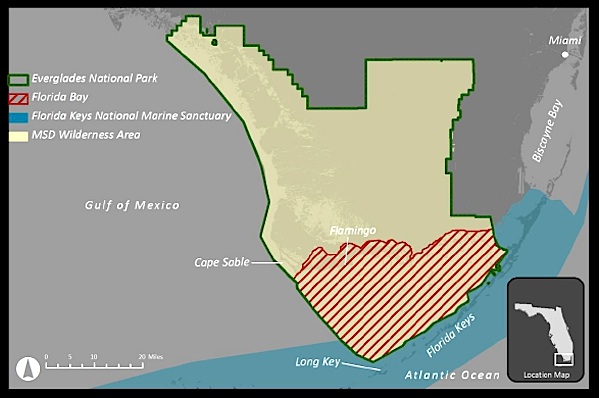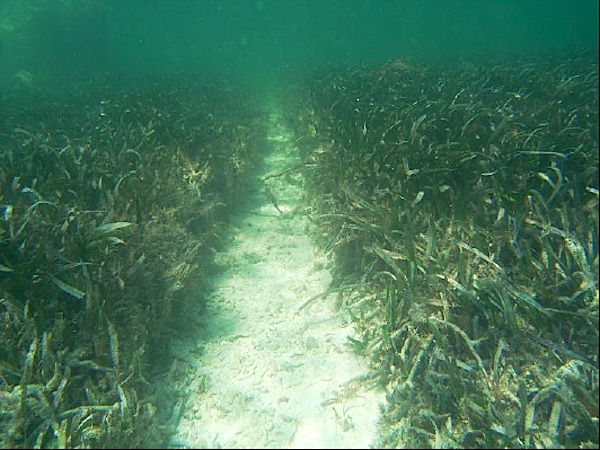
Everglades National Park officials are seeking comments on their draft plan for restoring seagrass beds in Florida Bay. NPS graphic.
With hopes of reducing damage caused to seagrass beds in Florida Bay, officials at Everglades National Park have crafted a management plan that strives to reduce prop scarring of the beds while also restoring damaged beds.
The preferred approach under the plan is to create "a formal, comprehensive seagrass restoration program for Florida Bay, in conjunction with the proposed establishment of pole and troll zones in shallow areas to aid in reducing prop scarring and vessel groundings." The end goal is to create an adaptive restoration plan "for assessing, restoring, and monitoring vessel-induced damages to seagrasses."
Florida Bay is important habitat for fish nurseries, and it's also used by a range of federally protected species, such as the Bottlenose dolphin, Florida manatee, American crocodile, Green sea turtle, Kemp's Ridley sea turtle, and Smalltooth sawfish, among others.

Scarring of seagrass beds by motorboat props have Everglades officials creating "pole and troll" areas within Florida Bay with hopes of reducing such impacts. NPS photo.
Now, one of the interesting aspects of creating this plan is that Florida Bay is within the Marjory Stoneman Douglas Wilderness Area. As such, it is to be managed to preserve wilderness character. And, in that spirit, motorized boats could in theory be banned from entering the bay's waters that fall within this wilderness area.
However, when the wilderness legislation was drafted in 1978, it specifically "recognized that motor boat use in some capacity would be part of the uses of Florida Bay and other marine waters given its vast size, traditional uses and related factors when it established only the bay bottom as wilderness," Fred Herling, the park's supervisory park planner, explained in an email. "The legislation left the surface and water column as non-wilderness."
Nevertheless, under the draft plan park officials are aiming to reduce impacts from props by creating "pole and troll" areas in the bay, where boaters are expected to turn off their boat's engines and use poles, paddles, or electric trolling motors to move about. Under the plan, roughly 131,400 acres, or one-third of Florida Bay, would be designated as pole-and-troll areas.
Some areas of the bay also have been closed by Everglades Superintendent Dan Kimball to public use: Little Madeira Bay, Joe Bay, waters immediately adjacent to Porjoe, Sandy, Duck, and the Tern Keys (as posted) and the moats and internal creeks associated with the Buchanan Keys.
"I view this plan as providing the park and its many partners with an important tool to better protect Florida Bay. The goal of the plan is to provide a concise and easily applied process for evaluating seagrass damage, determining the appropriate restoration action, implementing restoration projects, and evaluating the success of resource recovery," said Superintendent Kimball in a park release. "With the support of the South Florida National Parks Trust, in particular its Florida Bay Stewardship Fund, we have been able to develop an approach to improve resource conditions and visitor enjoyment of the bay.
"We’re pleased to have reached this important milestone. We now look forward to hearing from the public and working together to meet some of the challenges associated with the numerous boat groundings and propeller-scarred areas in the bay.”
You can review the plan, and comment on it through this Friday, at this website. After the public review period ends, comments will be reviewed and analyzed, and the Final Florida Bay Seagrass Habitat Restoration Management Plan will be issued early next year.



Add comment